***
N. China
Day 6 - 4th November - Beijing: Summer Palace (Part 1)
This day, I went to see the Summer Palace. Since my schedule was so relaxed, I only left at 9:45, which was very slack.
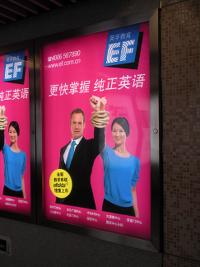
"Tie down an Angmoh" (it's an English language ad)
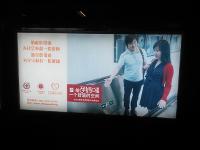
This ad is encouraging blood donation by comparing it to giving way to pregnant women. Judging by the behavior I saw on the Beijing Subway, this campaign was doomed (no one gave up their seats, though I didn't see any pregnant women, so perhaps superlative deference is granted them). This ad campaign should've come with a "please get sterilised after you give birth" footnote.
Though I was in a holiday mood and thus didn't really feel the urge to eat, I decided to start off my day right, given that lunch and dinner probably wouldn't be substantial (if even there).
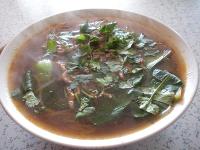
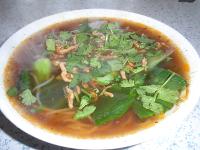
Shredded Meat Mee Sua (Vermicelli) (7¥). This was at a place selling Jiangnan food: since it wasn't Northern Chinese food, it was good.
The soup was sourish and slightly spicy, and there wasn't much meat; meat is very expensive in China.
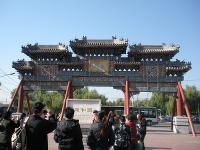
Summer Palace Ceremonial Gateway (the generic name is "牌坊")
There were 3 white girls walking in front of me, and an auntie quoted them 2¥ per (500-600ml) bottle of water. When I came by, she quoted me 1¥ per bottle (in Mandarin, of course). I didn't hear her quote properly, so I asked her if it was 2 bottles for 1¥, and she asked me if water that was so cheap would be potable.
Later I saw the girls at the ticket counter again and told them how they'd avoided being conned. 1 was French and 2 were Portuguese, and they talked to each other in the Europe's Universal Language - English.

I'd come during the Summer Palace's "Slack Season"
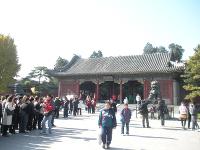
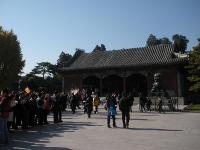
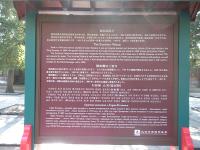
Summer Palace
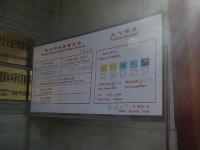
You can forecast tourist volume (as well as that through a specific gate) as well as the weather. I wonder if it's a time series model.
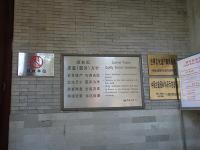
"Quality Service Guidelines... Only satisfied visitors will feel at home in the Summer Palace. Sustained progress, eternal modesty"
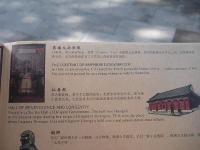
Cixi's vanity: "In 1905, in her seventies, Cixi asked the Dutch portraitist Hubert Vos to make a portrait of her. The portraitist painted her as a young woman in order to flatter her"
Once past the entrance, I got propositioned by a tout. I was intending to take my time, so I tried to shake her off (among other things, by telling her that), but she was very persistent, saying that she had studied history and so would be able to guide anywhere in Beijing, even offering a free trial and saying that I could not pay her in the end, or even call the police if I felt she'd cheated me. So eventually I agreed to let her guide me. It turns out she was an illegal (unlicensed) guide - which explained her desperation.
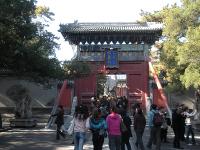
Gate of Benevolence and Longevity
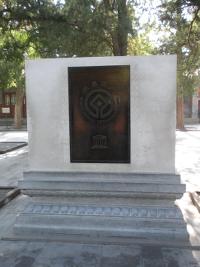
UNESCO stone

Hall of Benevolence and Longevity, built by Qianlong for his mother.


Cixi received foreigners here
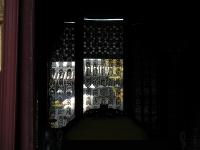
226 instances of the word "寿" (longevity), written in a variety of archaic Chinese scripts, from tributaries
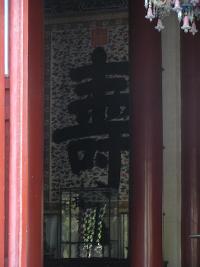
Big "寿" written by Cixiherself
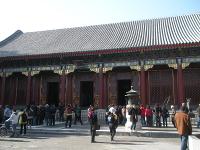
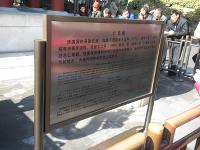
Hall of Benevolence and Longevity
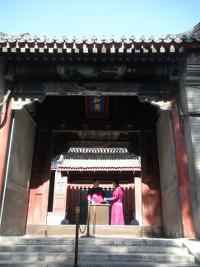

Garden of Virtue and Harmony
My guide had an annual pass into the Summer Palace, but some areas were excluded from this pass so I'd have to pay for her ticket if I wanted commentary on them. This was one of them. She advised me to skip it, but I said since I'd gotten the through ticket, I might as well have a look.
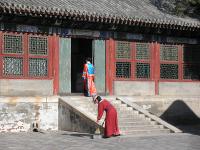
Gimmicky attendants in robes (I believe the one below might actually be wearing male robes)
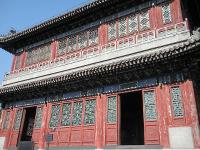

Makeup building

Mockup

Corridor and building
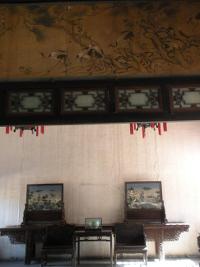
Interior

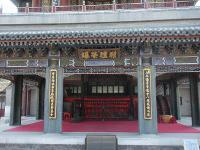
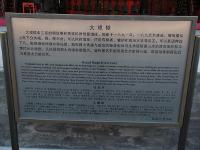
Grand stage

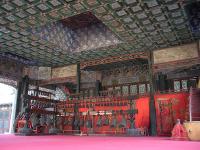
Grand stage interior
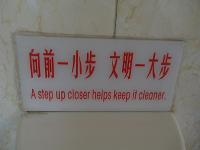
"A small step forward is a large step for civilization"
This was quite a good translation, even if it wasn't literally translated
I exited the Garden of Virtue and Harmony and rejoined my guide.

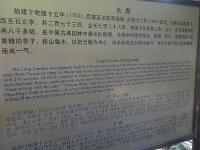
Long Corridor
At 728m, my guide claimed it was the longest in the world. Yet, according to this photo on Flickr, a temple in Rameshwaram, India has a 897m-long corridor
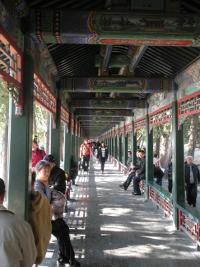
Long Corridor
The current Summer Palace is 290 square km, versus the old Summer Palace at 350 square km. This is one reason why Cixi reconstructed this but not that - to save money.
Kunming Lake
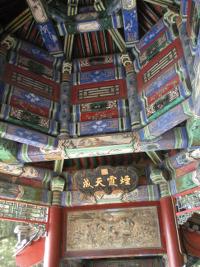
Mini-pavilion in Long Corridor
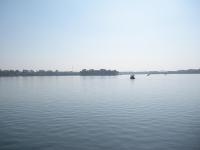
South Lake Island (南湖岛)
I'm guessing it is more beautiful when there's less pollution and when the sunlight isn't so harsh
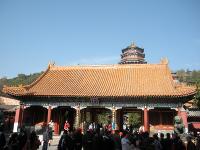

Hall of Dispelling Clouds and Tower of Buddhist Incense: Entrance
This was an area where a supplementary was needed by my guide, but she said it was worth it so I bought her one.
I remarked to my guide that PRCs liked to buy a lot of rubbish ("废物"). One theory she advanced was that this was for people who were unable to visit various places - the rubbish was a consolation prize.
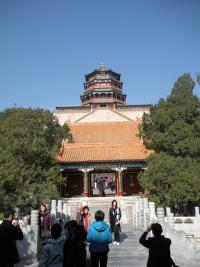
Hall of Dispelling Clouds and Tower of Buddhist Incense
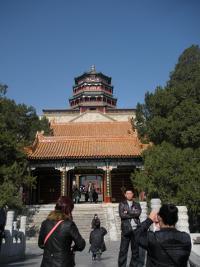
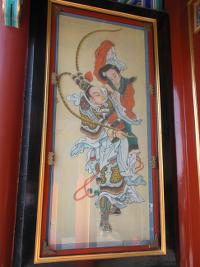
Despite my guide's claim of being able to guide everything in Beijing, she was unable to tell me what this was, beyond saying that it was a Jin (Jurchen) dynasty scene (the giveaway: the ridiculous tentacles), drawn in the Qingdynasty.
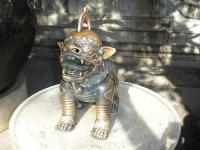
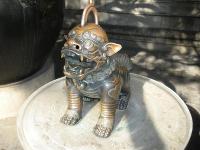
Some animal (I think it's a Qilin)
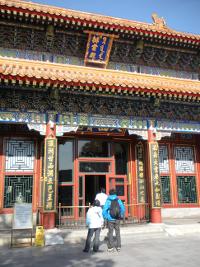
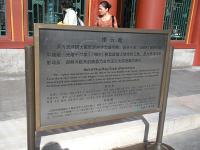
Hall of Dispelling Clouds
The signs have Manchu on the right because when you look out from the inside, the Manchu will be on your left and the Han writing on the right. This is called "东和左为上" ("The East and Left have Primacy")
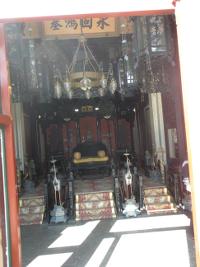
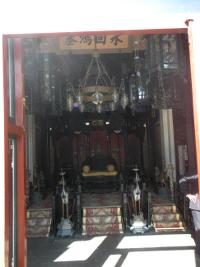
Inside: the statues of birds represent "鸟尊" ("Bird Respect")
The light on top is a German light from 1903. The birds are the bottom are candle holders. My notes also say something about Ludun behind the Phoenix - I assume that's the animal.
Li Yanying installed the lights secretly. Cixi came back one day and asked for the candles to be lit, and the lights were turned on, so she was happy. During the Cultural Revolution, they dup up his grave and only found his head (with his queue still attached), so they threw it into the shit pit.
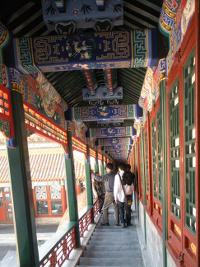

Staircase Qianlong took for prayers (at the side)
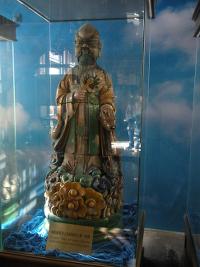
寿 (Longevity), Ming - they used to put statues of him and 2 others on roofs.
His symbols are the Heron and the Deer. Ironically, these animals don't live long.
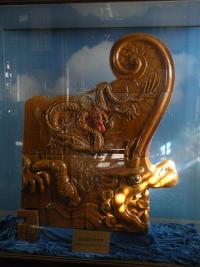

鸱吻 (chi1 wen3): State of the Art Chinese Fire Protection: these were put on top of roofs as a firefighting measure, and buildings from the Western Zhou onwards had it (those on the roofs now are replicas).
The guide said this was also called chi1 shou3, but I can't find the characters for that. Presumably the first is the same.
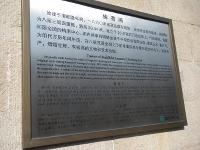
View of Summer Palace Lake from Tower of Buddhist Incense
When they invaded, the French thought that the roof was made of gold, because of the angle.
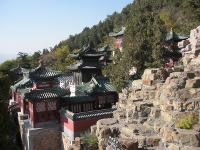

Copper pavilion used by concubines. It was cast in 1 piece, but they lost it.
Also, the number of animals on the corner of each eave indicates the importance of the building (the maximum is 9; the Forbidden City has 10, but that's special; my guide said although you could see 11 animals, 1 of them did not count).
I asked my guide why 9 represented the most important building, since it was an odd number. She said that 6 and 8 hadnot been lucky numbers in the past. Indeed, odd numbers had been considered the lucky ones - it was because of the Cantonese that 6 and 8 came into favour.
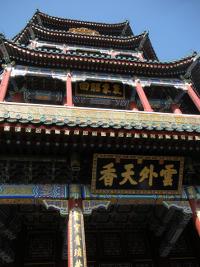
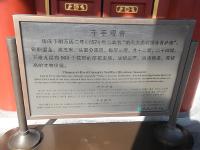
Thousand-Hand Guanyin Buddha: in Tower of Buddhist Incense
The stuff on top is not original, but tacked on
Note that there aren't actually 1,000 hands. I mentioned how in Japan each hand represented 40, but my guide said that wasn't the way it worked in China.
The Tower of Buddhist Incense is three-storeyed.
Beijing is very strict about incense burning - you can't do it inside historical buildings.
A legend goes that Kublai Khan wrote "你不动我, 我不动你" ("You don't touch me, I don't touch you") on a stele and Qianlong unearthed this stone stele, and it's still there.
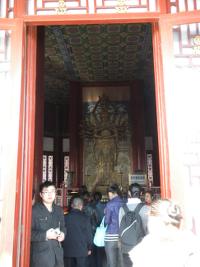
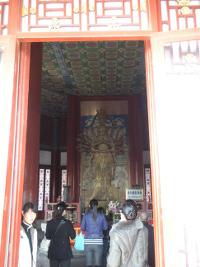
The 1,000 arm guanyin was moved here in 1989.
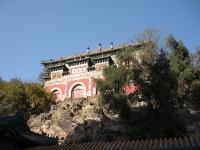
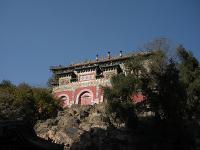
"泉香界" - temple at the top of the little hill
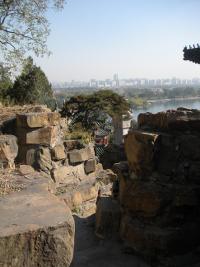
Path. You can see reproductions of the Ming figurines (福, 禄, 寿 - Good Fortune, Prosperity and Longevity) on top of the roof on the left.
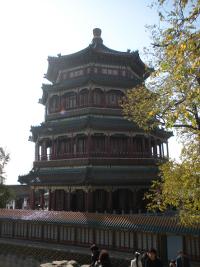

The Tower of Buddhist Incense

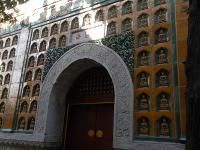
Wall of temple on the top
At the central part of this temple is a statue of Buddha staring at a wall (the design was due to space constraints - there isn't much to work with here).
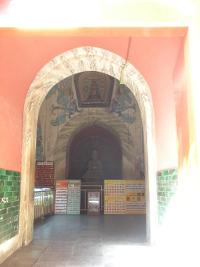
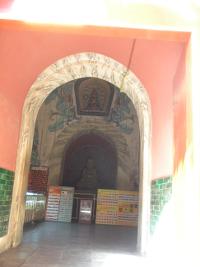
Statue at the side (photography inside was forbidden)
PRCs are very adept at rushing into a subway train to snatch the seats. They're very aggressive (as you need to be to survive in China)
Some fellow travellers who did not know Mandarin were terrified of eating weird things and so ate at the hostel. So I suggested they could have "no internal organs" and the names of various meats written on a piece of paper.


